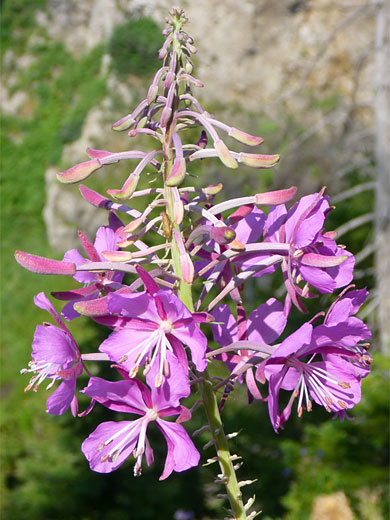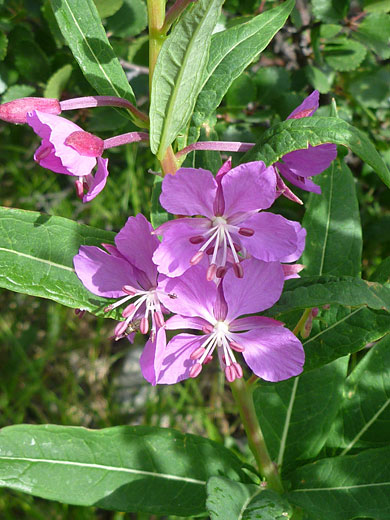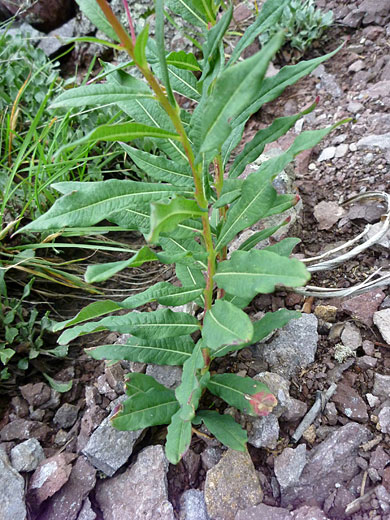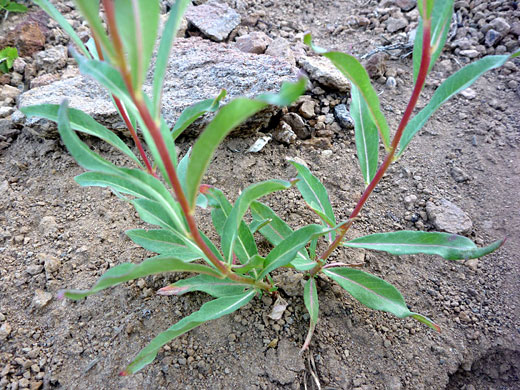Common names:
Fireweed, great willow herb, rosebay willow herb
Family:
Scientific name:
Chamerion angustifolium
Synonyms:
Epilobium angustifolium, chamaenerion angustifolium
Main flower color:
Range:
All the western states; east to North Dakota, Nebraska and New Mexico
Height:
Up to 6 feet
Habitat:
Mountains, grassland, roadsides, open areas in forests
Leaves:
Lancelotate, narrow, 4 to 6 inches long, growing at intervals along the lower half of the stem
Season:
June to September
Fireweed, chamerion angustifolium (formerly epilobium angustifolium), is a common sight in many Western states, predominantly in mountainous regions though its range extends to grassy lowlands. Often it occurs on disturbed ground, such as along roadsides, beside trails and in open areas after wildfires. The green leaves point slightly upwards and have one unusual characteristic in that the two outermost veins join to form a ring, and do not extend to the leaf edges. The central vein is particularly prominent.
The many pink flowers form an elongated cluster, whose components open at intervals from mid to late summer, starting low down the stem and moving upwards. Individual flower heads have four narrow, linear, dark pink sepals (up to 0.6 inches long) beneath four larger, light pink petals, up to one inch in length. At the center are eight curling white stamens, topped by brownish-red anthers, and also pistil topped by a large four-pronged style, which forms fully only after the flower opens. The pistil is longer than the stamens.
The many pink flowers form an elongated cluster, whose components open at intervals from mid to late summer, starting low down the stem and moving upwards. Individual flower heads have four narrow, linear, dark pink sepals (up to 0.6 inches long) beneath four larger, light pink petals, up to one inch in length. At the center are eight curling white stamens, topped by brownish-red anthers, and also pistil topped by a large four-pronged style, which forms fully only after the flower opens. The pistil is longer than the stamens.
All Contents © Copyright The American Southwest | Comments and Questions | Contribute | Site Map








